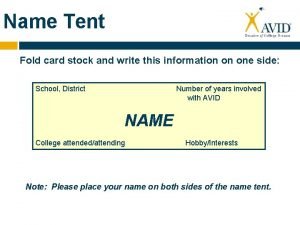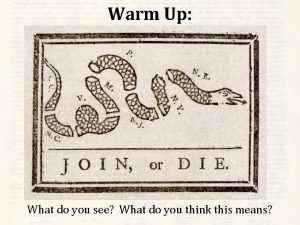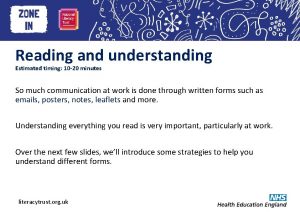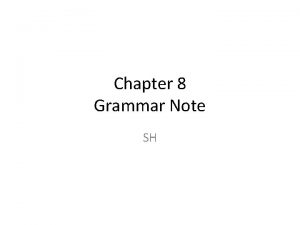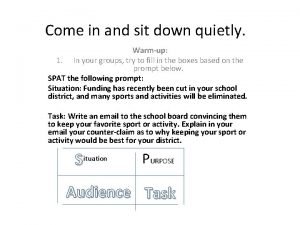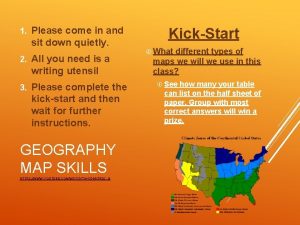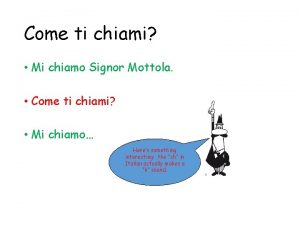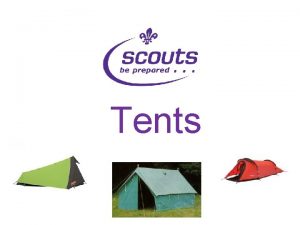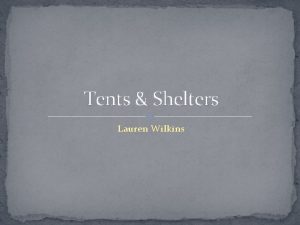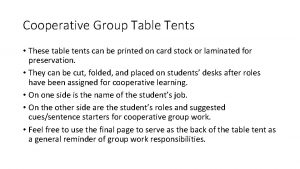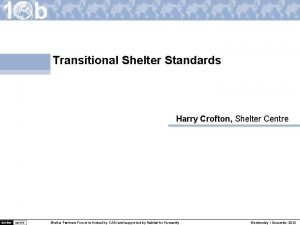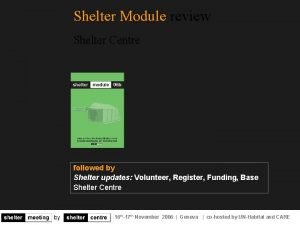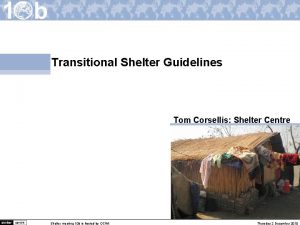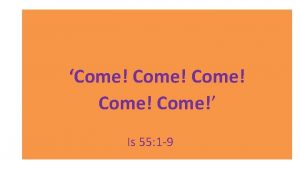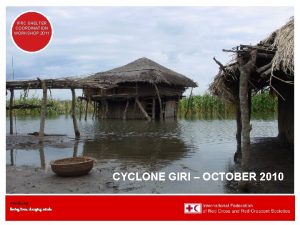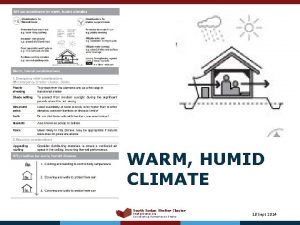Give Me Shelter Tents Tents come in hundreds














- Slides: 14

“Give Me Shelter”

Tents • Tents come in hundreds of combinations of size, shape, material, colors and uses. • There are 4 main questions you need to ask yourself when selecting a tent • What activities will you be doing? • What seasons will you use it? • How many people do you want it for? • How much can you spend?

1. Bivy Sacs • Solo shelter systems • Essentially a sleeping bag with a hoop around the head

Bivy Sacs- Are for people that • Frequently travel solo in the backcountry. • Climb big-wall routes that require more than a day to complete. • Camp during long-distance biking trips. • Seriously desire to shed every possible ounce from their loads. • Don't mind sleeping in snug spaces.

2. Three-season tents (most common) • For spring, summer and fall usage in temperate climates. • Perform well in wind and rain • Not suited to handle significant snow loads

3. Four-season Tents • One or two additional poles to fortify walls and help against severe wind or heavy snow loads • Rounded dome design, eliminating flat spaces on a tent's rainfly where snow can accumulate. • Extra poles will make them a touch heavier

4. Convertible Tents • Four-season models that can be converted into three-season tents

5. Warm-weather tents • Lightweight shelters, designed for one or two people, that feature large mesh walls for superb ventilation. • Can be used in three-season settings, but most useful in warmer, humid climates

6. Single-wall Tents • Designed with the minimalist in mind. • Essentially, they are rainflies equipped with a few vents you can zip open during warmer conditions

Capacity • Minus 1 rule • A 4 person tent is really only good for 3 people

Tent Terms • Ventilation – is good. You want lots of it • Fly – Water/wind proof material that is added on to the tent. Full fly is better than ½ fly for protection but compromises ventilation • Foot Print – tarp that you put under your tent • Bath Tub Design- built in foot print • Vestibule – xtra storage space at entrance of tent

Where should we set-up camp? • • Flat ground Elevated Sheltered from wind Upwind from potty, cooking spot and fire

Other Considerations • • • Weight Compressability Material of Poles Read Consumer Reviews Don’t buy without setting up first

Unwritten Tent Rules • Lay out all material and poles before setting up. • Poles and material are not invincible • Shake out tent and zip up before packing • Roll poles inside material • Stuff material in sac (so it doesn’t get memory) • Never put tent away wet • Follow the seams
 Come rico, come sano
Come rico, come sano Avid name tents
Avid name tents How to fold a name tent
How to fold a name tent What is the main idea of give me liberty or give me death
What is the main idea of give me liberty or give me death Come give me love
Come give me love Subject + have/has + verb in past participle + complement
Subject + have/has + verb in past participle + complement Softly and tenderly jesus is calling
Softly and tenderly jesus is calling Come holy ghost lyrics
Come holy ghost lyrics Come in and sit down
Come in and sit down Come come emmanuel son of god appear
Come come emmanuel son of god appear Vorrei essere al mare
Vorrei essere al mare Hey come.on
Hey come.on Come in come in and sit down
Come in come in and sit down Come mi chiamo come mi chiamo
Come mi chiamo come mi chiamo Come mi chiamo come mi chiamo
Come mi chiamo come mi chiamo

